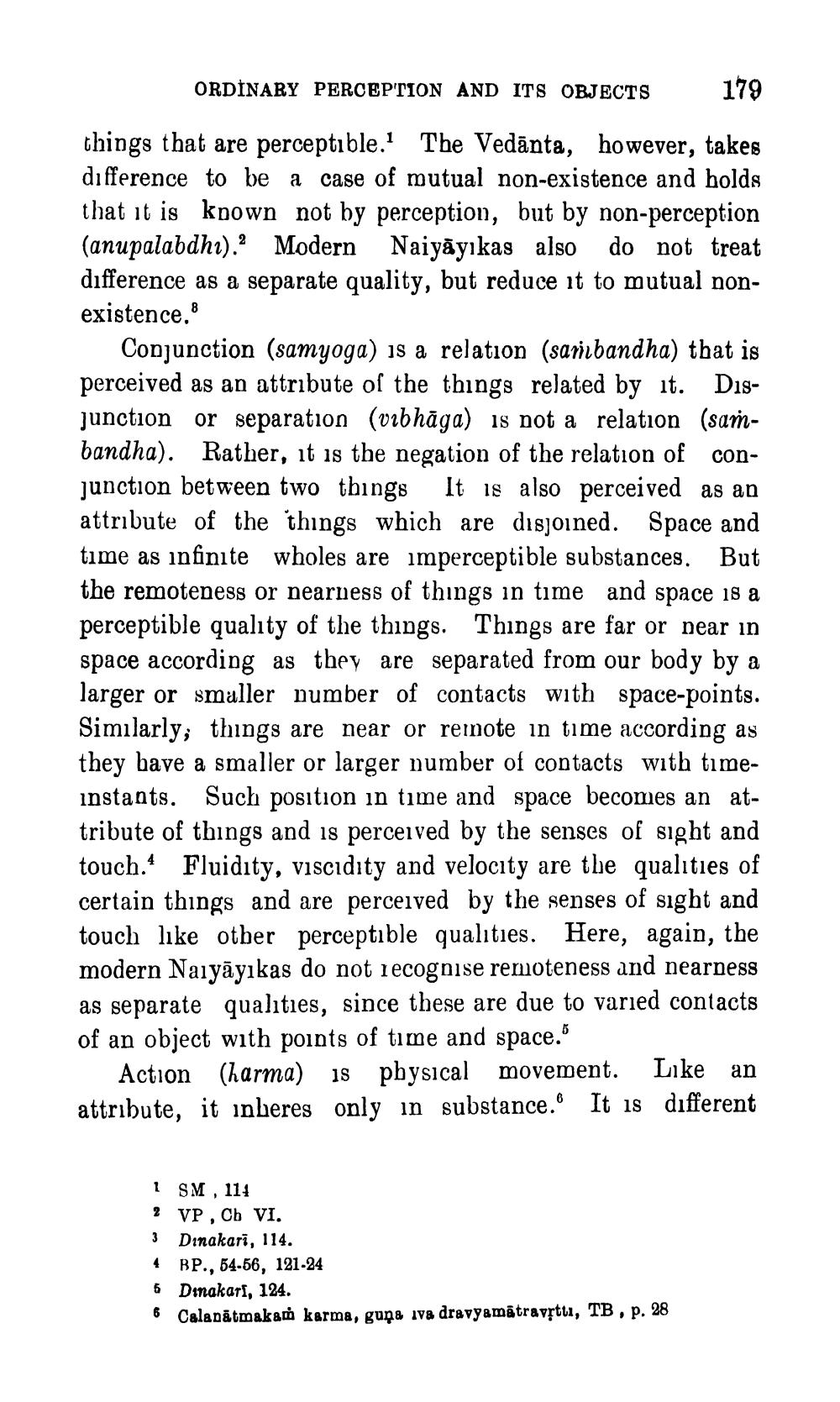________________
ORDINARY PERCEPTION AND ITS OBJECTS 179 things that are perceptible. The Vedānta, however, takes difference to be a case of mutual non-existence and holds that it is known not by perception, but by non-perception (anupalabdhı). Modern Naiyāyıkas also do not treat difference as a separate quality, but reduce it to mutual nonexistence,
Conjunction (samyoga) is a relation (sarbandha) that is perceived as an attribute of the things related by it. Disjunction or separation (vibhāga) is not a relation (sarbandha). Rather, it is the negation of the relation of conjunction between two things It is also perceived as an attribute of the things which are disjoined. Space and time as infinite wholes are imperceptible substances. But the remoteness or nearness of things in time and space is a perceptible quality of the things. Things are far or near in space according as they are separated from our body by a larger or smaller number of contacts with space-points. Similarly; things are near or remote in time according as they have a smaller or larger number of contacts with timeinstants. Such position in time and space becomes an attribute of things and is perceived by the senses of sight and touch. Fluidity, viscidity and velocity are the qualities of certain things and are perceived by the senses of sight and touch like other perceptible qualities. Here, again, the modern Naiyāyıkas do not recognise remoteness and nearness as separate qualities, since these are due to varied contacts of an object with points of time and space.
Action (harma) is physical movement. Like an attribute, it inberes only in substance. It is different
1 SM , 114 * VP , Cb VỊ. 3 Dinakari, 114. 4 BP., 54-56, 121-24 6 Dinakars, 124. 6 Calapātmakam karma, guņs iva dravyamātravrttı, TB, p. 28




